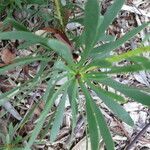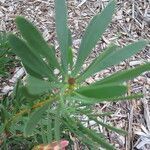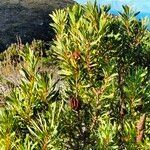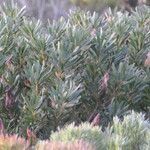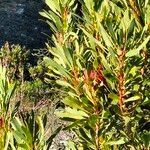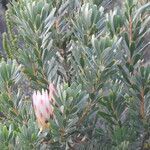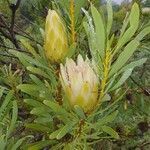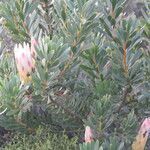A shrub. It grows up to 2.5 m tall. The leaves are clustered near the ends of branches. They are narrow and oval. They are 13 cm long by 0.8-1.3 cm wide. It tapers to the ends. The flower heads are slender and 10-13 cm long by 7.5 cm across. The colour can be white to pink or red.
Shrub or tree to 4.5 m. Leaves linear-spathulate. Flower heads narrowly obconic, 100-160 x 70-90 mm, involucral bracts cream-coloured to red, sticky, style 70-90 mm long.
